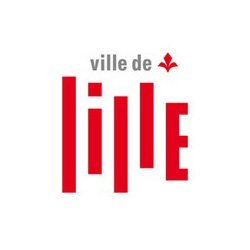
ORAL PRESENTATIONS
Time Allocation
Each regular submitted paper – included the papers of the special sessions - has been allocated 20 minutes for presentation, this includes time for questions (15 mn+5mn), and this time allocation must not be exceeded.
Keynote speakers have been allocated 30 minutes included questions.
To make the most of the presentation time, you might find the following guidelines helpful:
- Speak clearly and avoid colloquial English – not all delegates have English as their native language.
- Summarise your written paper and present any updated material and results, concentrating on the basic concepts and conclusions, not on details.
- Please note that questions may be taken following your presentation. This should be taken into account when preparing your presentation.
It is imperative that you do not exceed your time allocation
Visual Aids
For RADAR 2014 we will only permit the use of PowerPoint and .pdf presentations.
There is no need to email your slides to the conference organisers in advance.
Slides must be handed up at your arrival when withdrawing your badge at the registration desk. Technicians and staff will help you pre-loaded your presentation onto the computers located in the preview room. They will display the slides to the correct conference rooms.
When saving your presentation please save it using your Programme Number, which may be found in the conference programme, followed by the presenting author’s surname. e.g.: MOO.1.1_melloni.
The SEE cannot be held responsible if authors arrive at the time of presentation with an incompatible presentation. Please contact the Event Organisers as soon as possible with any queries regarding audio-visual aids.
Useful Presentation Tips
DO NOT PUT TOO MUCH INFORMATION ON VISUAL AIDS:
- A maximum of six or seven lines including the title (not more than 20 words).
- Avoid abbreviations, mathematics and tables of results (graphs or histograms are much better).
- Lettering should be lowercase, medium or bold and at least Arial 22 point
- Keep diagrams as simple as possible
- Company logos, if used, should be of a modest size
- NEVER USE - computer printouts, photocopied pages of books or hand-drawn transparencies
Working Language
The working language of the Conference is English and will be used for all presentations and discussions.
POSTER PRESENTATIONS
Set-up and discussion times
The 3 Poster Sessions will last one hour each and will be held in the exhibition area during the afternoon coffee break on Tuesday 14th, Wednesday 15th and Thursday 16th
Each poster presentation will be allocated a board marked by the poster’s title and a number according to the conference programme.
Each Poster display will remain in situ for the session. You are therefore requested to set up your display any time before the session starts. This will give you the opportunity to talk to other delegates about your work. Do not forget to remove your poster at the end of the session in order for the organizers to prepare the following poster session. Note that at the end of a poster session, any poster left on a board by its author will be through away.
Your Display
In addition to your written paper included in the Conference publication, the poster session is your opportunity to present your work directly to other delegates and to discuss it with them. It is a particularly useful format for small group discussion and debate.
Try to attract the registrants to your poster. Unless they come to it, you cannot expect to have a discussion with them. The display should therefore be visually appealing and should contain the essence of your paper in a form that is easy to understand.
Your display should consist chiefly of keywords, diagrams, photographs, etc. Colour photographs are particularly attractive in a poster display. Diagrams and graphs should have clear captions. All lettering should be easy to read. Handwritten text or diagrams are not recommended. All graphs and diagrams should be drawn with thick lines (preferably 1mm or more in width). Use colour to emphasise important features.
The poster display is important. You are recommended to take as much trouble with it as you did in preparing your written paper.
You should clearly display the following information on your poster board:
• The title and authors of the paper
• Your usual contact details (e.g. an Email address) to allow delegates to follow up any discussion.
Display Board
One board, 1.00 m high x 2.50 m wide, (Landscape format) will be assigned for each paper.
No equipment display will be allowed in the poster area.








